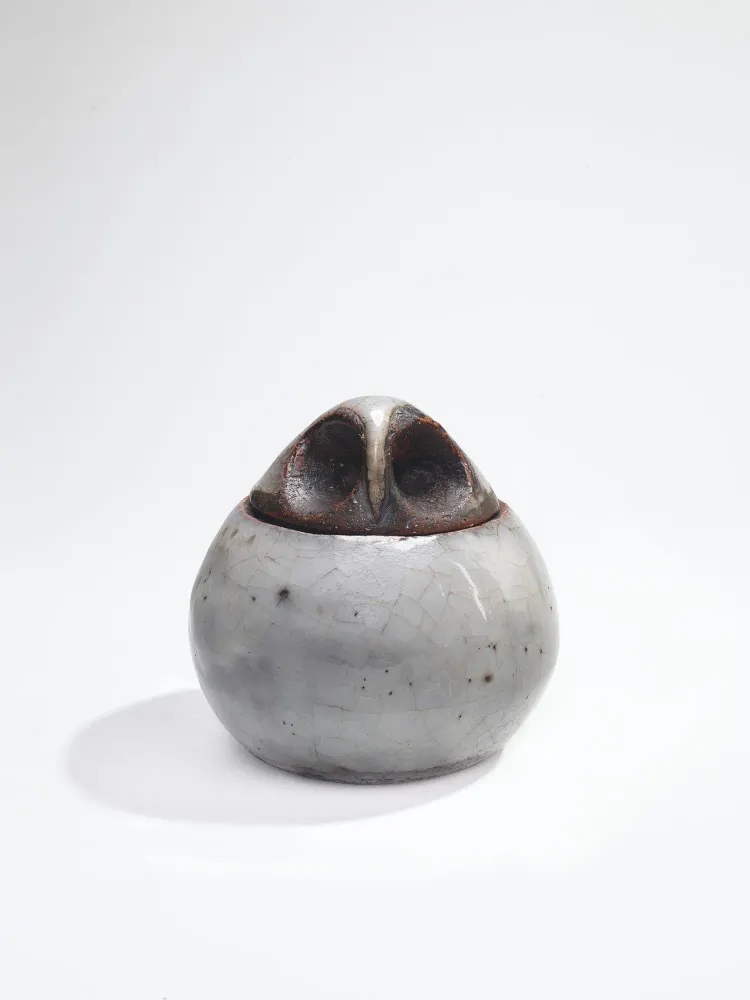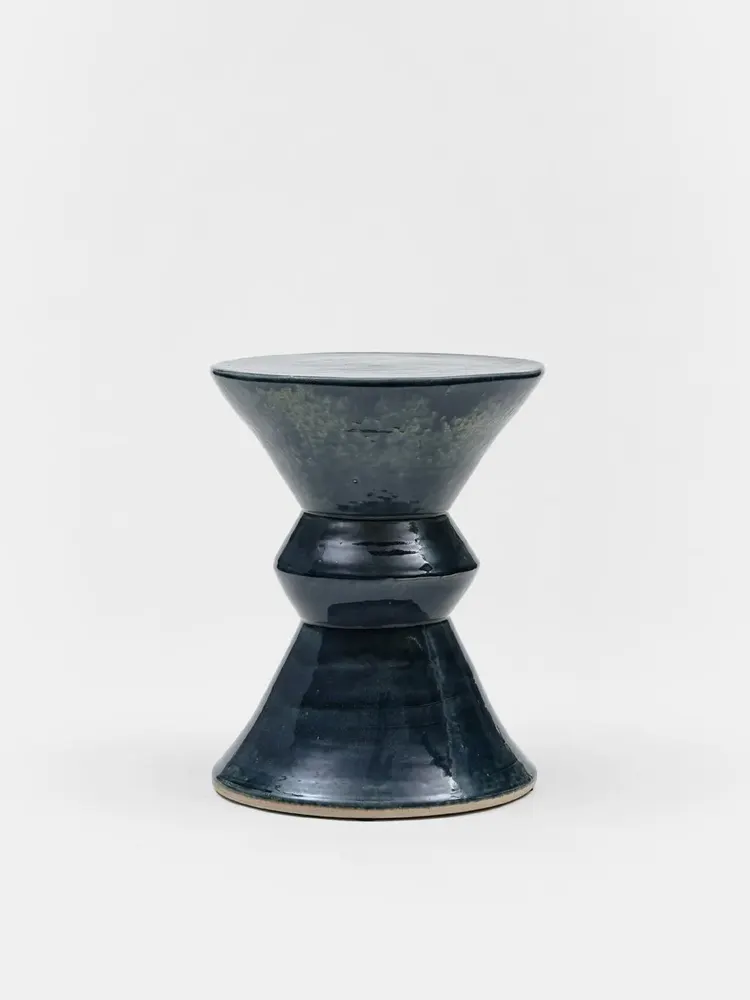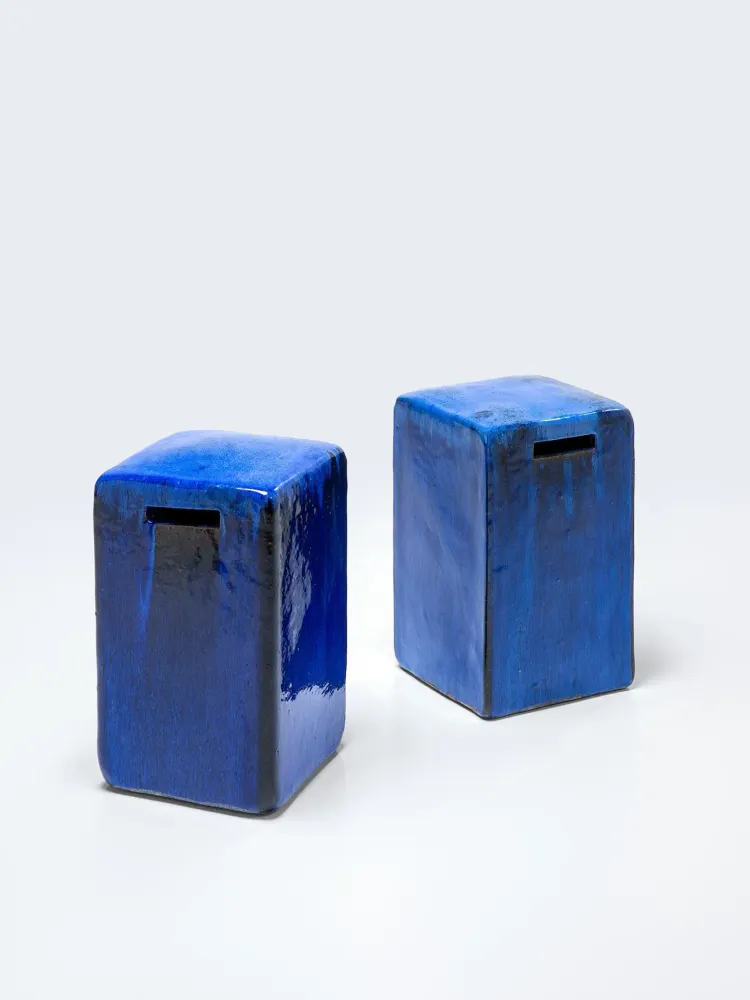Popular searches:
Design in Ceramic
Description: The story of ceramic, a material as ancient as human ingenuity itself, is far more expansive than the simple vase on a mantelpiece. It is a narrative woven through millennia, charting a remarkable evolution from the most basic vessels of survival to the sophisticated, sculptural forms that define contemporary design. This journey, from the primal act of shaping earth with bare hands to the precision of digital fabrication, reveals ceramic not merely as a substance, but as a dynamic canvas that has consistently adapted to human needs and artistic aspirations, forever shaping our built and aesthetic worlds.The narrative of ceramic in design begins in the mists of prehistory, where its fundamental utility laid the groundwork for its eventual artistic and architectural prominence. The earliest pottery vessels, dating back as far as 20,000 years ago in East Asia, were simple tools for mobile foragers, primarily for carrying and storing food and water. This early application underscores a fundamental human need for containment and preservation, which clay uniquely fulfilled. The evolution of ceramic techniques began with methods like coiling clay into long strands to form smooth walls, a practice observed in the Third Millennium BCE. A pivotal advancement was the invention of the potter's wheel around 3500 BCE, which revolutionized production by enabling the creation of more uniform and finely crafted pottery. Beyond basic functional needs, clay was utilized for a diverse array of household objects, including roof tiles, water pipes, toys, figurines, and loom weights. Ancient pottery also served significant ritual and ceremonial purposes, with unique designs, shapes, and decorations offering valuable glimpses into cultural practices and beliefs. The designs frequently carried profound symbolic meanings, reflecting the cultural, spiritual, and mythological beliefs of their creators. This enduring dual purpose, serving both essential functional needs and profound cultural expression, highlights that from its very inception, ceramic design inherently balanced utility with symbolic and aesthetic value.In ancient Mesopotamia, ceramics were extensively employed in the construction of monumental buildings such as temples and palaces, with the Sumerians notably using glazed ceramics to create intricate wall decorations. Similarly, in ancient Egypt, ceramics were fashioned into decorative tiles, vessels, and architectural elements, often adorned with intricate designs and hieroglyphics. Egyptian pottery was also characterized by vibrant colors and depictions of daily life and mythology. The Greeks were celebrated for their beautiful and technically excellent ceramics, which included roof tiles, antefixes, and friezes, frequently featuring distinctive red and black figure techniques. The Romans subsequently adopted and adapted these Greek ceramic techniques for their elaborate mosaics and decorative architectural elements. Notably, some Minoan furniture, particularly storage chests, was constructed from terra-cotta. China boasts one of the world's oldest and most influential ceramic traditions, with its origins tracing back to the Neolithic period. The development of porcelain during the Han dynasty and its subsequent refinement during the Tang and Song dynasties marked a zenith in ceramic artistry, with Chinese porcelain becoming highly prized globally. A compelling example of ceramic's early integration into furniture is the Chinese porcelain garden stool. Originating during the Ming Dynasty, over a millennium ago, these intricate, drum-shaped, and often perforated stools initially served as outdoor seating for elegant tea parties. Over time, they transitioned into indoor use, functioning as versatile side tables or additional seating. The widespread use of ceramics in ancient architecture across diverse civilizations demonstrates its profound capacity to define and enhance cultural identity through visual storytelling and structural application.The progression from basic utilitarian objects to integrated decorative and architectural elements is a clear historical trajectory for ceramics. Initially, ceramics were fundamental for survival, primarily used for pots and storage. Over time, as civilizations advanced, the material's aesthetic potential was increasingly recognized and exploited, moving from simple decoration applied on vessels to becoming integral decorative components of structures and furniture. This evolution, from basic tiles to intricate glazed wall decorations and eventually tiled tabletops and ceramic stools, demonstrates a growing sophistication in ceramic application. This progression reflects not merely technological advancement but also a shifting societal appreciation for aesthetics and luxury, where ceramics became a medium to express wealth and artistic refinement, foreshadowing its later, more complex design applications.The 19th and 20th centuries witnessed a profound transformation in design, driven by industrialization, new philosophies, and a re-evaluation of craft. Ceramic, with its malleable nature and diverse finishing possibilities, became a key material for designers to express the tenets of these movements. The Arts and Crafts movement emerged in late Victorian England as a direct reaction against the perceived soullessness of mass-produced goods. This movement championed traditional craftsmanship and hand-made items, seeking to restore dignity to the artisan and quality to manufactured goods. In ceramics, artisans focused on creating aesthetically pleasing and functional pieces that emphasized uniqueness and simplicity in their style, form, and glaze. The embrace of ceramics by the Arts and Crafts movement was not merely an aesthetic preference but a profound philosophical stance against the dehumanizing aspects of industrial mass production.Art Nouveau was a distinctive design movement characterized by its flowing, organic lines, intricate patterns, and motifs heavily inspired by nature. The movement's ambition was to create unique, handcrafted objects that seamlessly blended beauty with functionality. This aesthetic profoundly influenced ceramics, impacting both the form and surface decoration of pieces. Sinuous forms were achieved through traditional methods like the potter's wheel and through slip-casting, with stylized botanical motifs becoming a common decorative element. Art Nouveau consciously sought to establish a modern style that incorporated contemporary materials such as iron and glass, and ceramic was integrated into architecture, interior design, and even furniture. A notable aspect of ceramic production during this period was the embrace of "accidental" effects: damage during firing, the unpredictable effects of flames, and dripped glazes were utilized to create abstract decorations, revolutionizing the appearance of glass and ceramics around 1900.Art Deco emerged in the 1920s as a vibrant response to the more ornate and elaborate styles of the preceding century. It was characterized by bold geometric shapes, sleek lines, and the lavish use of luxurious materials. The movement embraced modernity, glamour, and celebrated technological advancements. In ceramics, Art Deco pieces were distinguished by their prominent geometric patterns, the incorporation of metallic elements, and a palette of bold colors. Streamlined, aerodynamic forms, directly inspired by contemporary technology, were a prevalent feature. A significant aspect of Art Deco's impact on ceramics was its relationship with industrialization. The rise of mass production techniques, enabled by technological advancements, made Art Deco ceramics more widely accessible to the general public. The application of Art Deco principles to ceramic design reveals a compelling paradox: the simultaneous embrace of mass production and a commitment to luxury.The Modernist and Mid-Century Modern periods, spanning roughly the 1930s to the 1960s, were defined by a focus on streamlined shapes, practicality, and a "less is more" philosophy. The era saw the increased adoption of new materials like plywood, plastic, and tubular steel, indicative of technological advances and the growing capacity for mass production. The Bauhaus school, founded in 1919, exerted a profound influence on Modernist design, emphasizing functionality, simplicity, and the use of industrial materials. Mid-Century Modern ceramics, specifically from the 1940s to the 1960s, became a testament to innovative spirit, blending form, function, and contemporary aesthetics. This era witnessed a significant rise in studio pottery, which prioritized handmade, one-of-a-kind pieces over mass-produced goods, celebrating individual artistic expression. Designers like Roger Capron, Guido Gambone, Robert Maxwell, Stan Bitters, Lucie Rie, and Axel Salto, alongside figures such as Bernard Leach and Eva Zeisel, pushed the boundaries, increasingly treating ceramics as a sculptural medium. Aesthetically, Mid-Century Modern ceramics often featured distinctive shapes, geometric patterns, and unique color palettes. Glazing became a central element of the design process, with artists developing thousands of glazes to create highly distinctive and unique ceramic designs. The application of ceramic in Modernism followed divergent paths, showcasing both industrial integration and artistic autonomy, demonstrating the material's inherent flexibility to serve both industrial efficiency and individual artistic expression.Postmodernism, emerging roughly from the 1960s to the 1980s, served as a deliberate counterpoint to the minimalist aesthetics of Modernism. This movement embraced bold colors, eclectic patterns, geometric shapes, and an overall "more is more" ethos. It often featured unusual dimensions, brilliant colors, strange angles, and a deliberately ambiguous relationship between form and function. A key proponent of this style was the Memphis Group, which designed furniture, lighting, and ceramics characterized by colorful, abstract decoration and asymmetrical shapes. In ceramic art, Postmodernism introduced elements of commercialism and kitsch, freely reinterpreting and mixing styles from previous historical periods. Artists challenged conventional norms, exploring and incorporating new materials such as metals, glass, and found objects, moving beyond traditional clay-based methods. Ceramic art transcended its traditional vessel forms, expanding into large-scale public art and sculptural installations. A significant aspect of Postmodern ceramic art was its engagement with broader socio-cultural contexts, exploring themes such as identity, environmental concerns, and social justice.While traditionally seen in decorative objects, ceramic's journey into furniture design has evolved from subtle accents to integral structural components, reflecting advancements in material science and manufacturing. Ceramic tiles possess a long and distinguished history as both decorative and functional surfaces, appearing on tabletops in ancient Persia and gaining significant prominence in Italy during the Renaissance. The Chinese porcelain garden stool, originating over a millennium ago, exemplifies ceramic's early integration into furniture, initially serving as outdoor seating before transitioning into versatile indoor side tables or additional seating. Ceramic was also utilized for smaller decorative elements like handles and knobs on furniture.Ceramic, while possessing notable durability and hardness, is inherently brittle and heavy, presenting significant challenges for its application as a primary structural material in furniture. Its low tensile resistance means it is prone to fracturing under stress. In the early 20th century, structural ceramics largely receded from modern architecture, being supplanted by materials like glass, steel, and concrete, which were perceived to offer superior structural advantages. However, modern innovations have begun to address these limitations, enabling new possibilities for ceramic in structural applications. Contemporary ceramic furniture often incorporates internal "skeletons" or reinforcement, frequently made of metal, to mitigate fragility and weight. A more advanced solution lies in the development of ceramic matrix composites, which embed ceramic fibers within a ceramic matrix, drastically enhancing crack resistance, elongation, and thermal shock resistance. Furthermore, advanced manufacturing techniques like 3D printing enable the creation of complex, intricate, and hollow ceramic structures, significantly reducing the material's weight while maintaining structural integrity. Modern ceramic furniture also frequently employs hybrid designs, combining ceramic with other materials like wood, cork, or rattan, or utilizing ceramic primarily for surfaces such as tabletops, thereby circumventing some of its intrinsic limitations.The evolution of ceramic in furniture design marks a significant shift, blurring the lines between art, function, and material. Historically, ceramic's role in furniture was largely decorative or incidental, confined to tiles or garden stools. However, contemporary examples from Postmodernism and current design practice demonstrate a deliberate move towards ceramic as a primary material for furniture, often with an explicit sculptural or artistic intent. The use of internal reinforcement, such as metal skeletons, serves as a pragmatic solution to ceramic's inherent fragility. Yet, the overarching design intent is to showcase ceramic itself as the dominant aesthetic and functional material. This indicates a deeper philosophical transformation in design, where the boundaries between fine art, functional furniture, and material science are increasingly fluid, allowing ceramic to serve simultaneously as both a structural component and a sculptural statement, thereby challenging traditional design categories.Understanding the intrinsic properties of ceramic and the methods used to shape it is crucial to appreciating its design capabilities and evolution. Ceramics are inorganic, non-metallic solids typically formed from clay and other minerals, hardened by firing at high temperatures. They are generally very hard and exhibit high resistance to wear, possess high compressive strength, and are refractory materials capable of withstanding very high temperatures. They are poor heat conductors, making them effective insulators, and are highly stable and resistant to chemical reactions, acids, bases, and corrosion. Their non-porous nature further contributes to their durability and makes them less susceptible to staining and liquid absorption. The aesthetic versatility of ceramics is remarkable, manifesting in a wide range of colors, glazes, and textures.Traditional ceramic craftsmanship encompasses a range of fundamental techniques that have been refined over millennia. Hand-building, which includes methods such as coiling, pinching, and slab construction, allows for a high degree of creativity and the creation of complex forms. Wheel-throwing involves shaping clay into symmetrical forms on a potter's wheel, a technique that demands considerable skill and control and revolutionized pottery production in ancient times. Molding and slip-casting are techniques used for the mass production of complex shapes with consistency. Glazing and firing are critical stages, adding color, texture, durability, and making the pieces non-porous. Despite millennia of technological advancements, traditional ceramic techniques remain fundamental to the art form, underscoring the enduring human desire for unique, tactile, and character-filled objects.The advent of advanced manufacturing techniques has profoundly transformed ceramic design and production. 3D printing, or additive manufacturing, has revolutionized ceramic production by enabling the creation of complex, intricate, and hollow ceramic structures that would be difficult or impossible to achieve with traditional methods. This technology allows for rapid prototyping and customization, fundamentally changing how ceramic objects are conceived and produced. Techniques such as stereolithography, binder jetting, and robocasting are employed to build ceramic parts layer by layer. Artificial intelligence is increasingly integrated into ceramic design and manufacturing, enhancing precision, efficiency, and customization. AI-assisted design systems can generate personalized vessel designs based on user preferences, allowing consumers to participate directly in the design process. AI algorithms can optimize designs for specific applications and materials, and analyze and predict material properties, contributing to improved quality and reduced waste. Robotics are also being deployed for tasks such as material handling, glazing, surface finishing, assembly, and inspection, further enhancing efficiency and consistency.The ceramic industry is currently undergoing a significant transformation, driven by evolving societal values, technological advancements, and a renewed focus on environmental responsibility. Growing environmental concerns are compelling the ceramics industry to adopt more sustainable practices, including the use of eco-friendly materials, energy-efficient firing techniques, and robust recycling and reuse programs. The integration of advanced technologies is leading to the emergence of "smart ceramics," which possess new functionalities and can interact with their environment. These innovations are poised to revolutionize various applications, particularly within smart homes and industrial settings, with ceramics embedded with sensors and conductive materials. The future of ceramic design is also increasingly defined by a growing demand for customization and a proliferation of interdisciplinary collaborations that push the boundaries of the medium. Digital tools are at the forefront of enabling unprecedented customization, while partnerships between artists, technologists, engineers, and designers facilitate the exploration of new ideas and techniques. Ceramic design is moving beyond its traditional forms, embracing new functional and artistic expressions that challenge conventional perceptions of the material, from innovative tableware to large-scale public art installations.From the earliest hand-formed clay pots to the intricate, digitally printed furniture of today, ceramic has proven itself an unparalleled medium for human expression and ingenuity. Its journey is a compelling testament to a material that has consistently transcended its utilitarian origins, adapting to every shift in human culture, technology, and artistic philosophy. Whether embodying the raw authenticity of the handmade, the sleek precision of the industrial, or the playful eclecticism of the postmodern, ceramic has always found a way to reflect and shape our world. As we look to the future, with sustainability driving innovation and digital technologies unlocking previously unimaginable forms, ceramic stands poised to continue its remarkable evolution. It remains a dynamic, living material, promising new expressions that will undoubtedly redefine the boundaries of design, forever cementing its place as a foundational and transformative element in the enduring art of living.


